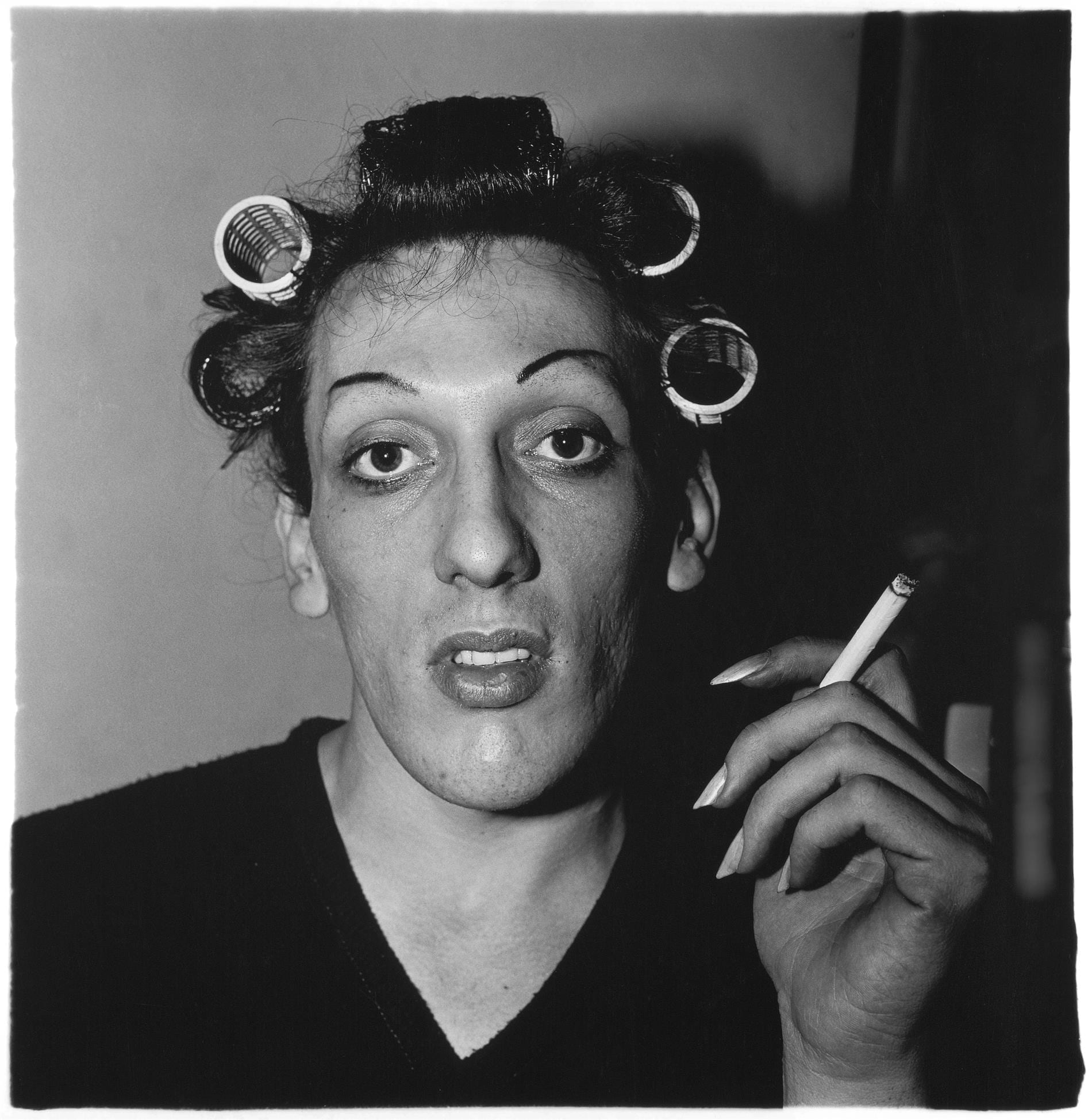She was not a theorist but an artist. Her concern was not to buttress philosophical questions but to make pictures.
By John Szarkowski, Director, Department of Photography, NY MoMA
Diane Arbus’s pictures challenge the basic assumptions on which most documentary photography has been thought to rest, for they deal with private rather than social realities, with psychological rather than historical facts, with the prototypical and mythic rather than the topical and temporal. Her photographs record the outward signs of inner mysteries.
Often, though less often than is thought, the nominal subject matter of her pictures was exotic. Among her best portraits are many of transvestites, nudists, other ideological specialists, freaks, and the mentally retarded. The meaning of these pictures has been missed by those who have not seen that in them (as in those that she made of the rest of us) her true subject was no less than the unique interior lives of those she photographed. Her most frequent subject was in fact children, perhaps because their individuality is purer, less skillfully concealed, close to the surface.
She was not a theorist but an artist. Her concern was not to buttress philosophical questions but to make pictures. She loved photography for the miracles it performs each day by accident, and respected it for the precise intentional tool that is can be, given talent, dedication, intelligence, and discipline. Her interest in the medium’s tradition was broad and generous, but her favorite predecessors were those whose work nourished her own: August Sander, Brassai, Weegee and Bill Brandt. She revered these photographers for the precision of their feeling, the economy of their description, the blunt immobility of their imagery, and surely also for their knowledge of darkness. In their photographs she found an unornamented truthfulness that was resonant with her own guesses.

A young man in curlers at home on West 20th Street, N.Y.C , 1966
She stuck with her subjects, exploring their secrets (and thus her own) more and more deeply. She was surely aware of the danger of this path, but she believed that her bravery would be equal to the demands she made of it.
Her life as a serious photographer spanned scarcely more than a decade. At forty-eight, at the end of her life, she resembled at first glance a game but slightly worried child. Both the youth and the uncertainty were doubtless in part cultivated, designed to create a precisely measured suggestion of amateurism, that might partially conceal both her superior intelligence and her fierce ambition. The ambition was of the most demanding kind, since its object was not applause or money or power, but personal excellence.
At forty-eight, at the end of her life, she resembled at first glance a game but slightly worried child.
Arbus knew that honesty is not a gift, endowed by a native naivete, nor a matter of style, or politics, or philosophy. She knew rather that it is a reward bestowed for bravery in the face of the truth. Those who have been news reporters, and have been required by their role to ask the unforgivable question, know the sense of relief with which one averts one’s eyes, once perfunctory duty is done. Arbus did not avert her eyes. She stuck with her subjects, exploring their secrets (and thus her own) more and more deeply. She was surely aware of the danger of this path, but she believed that her bravery would be equal to the demands she made of it.
(All rights reserved. Images @ The Estate of Diane Arbus. Text @ Museum of Modern Art.)







